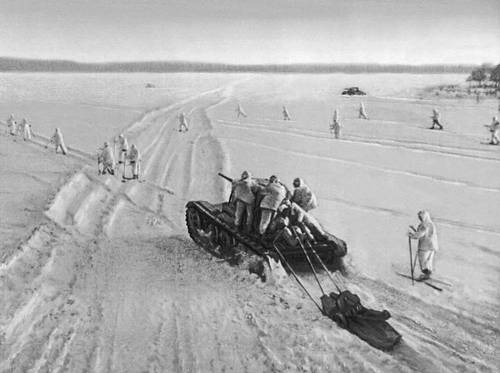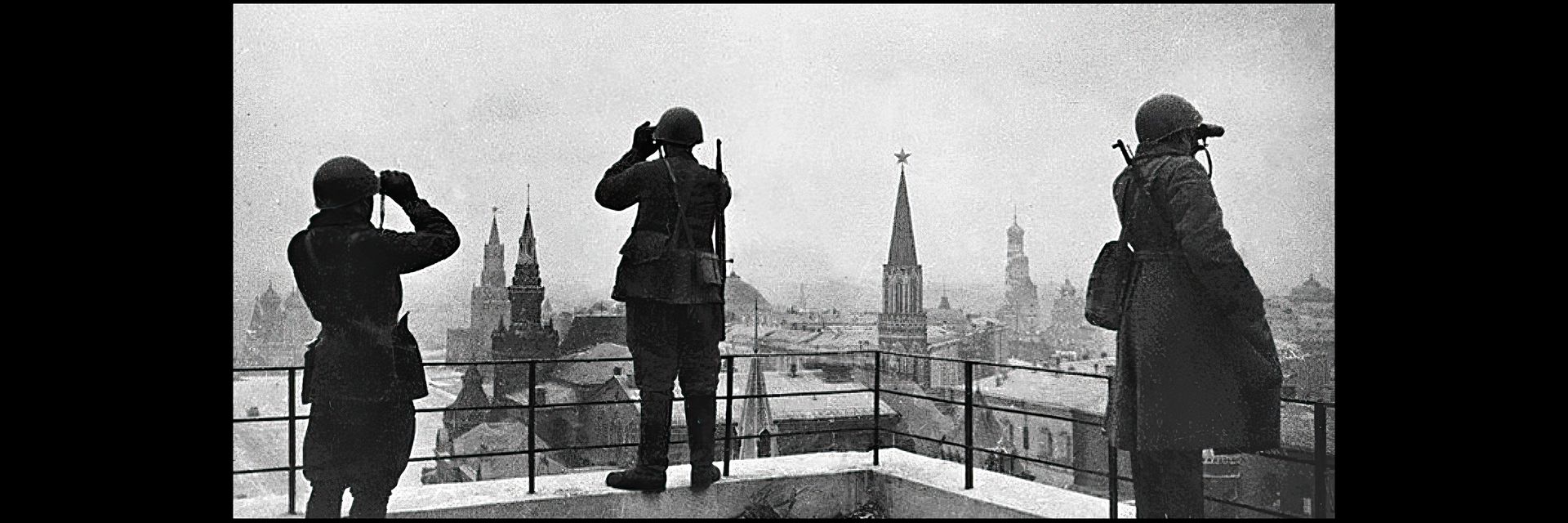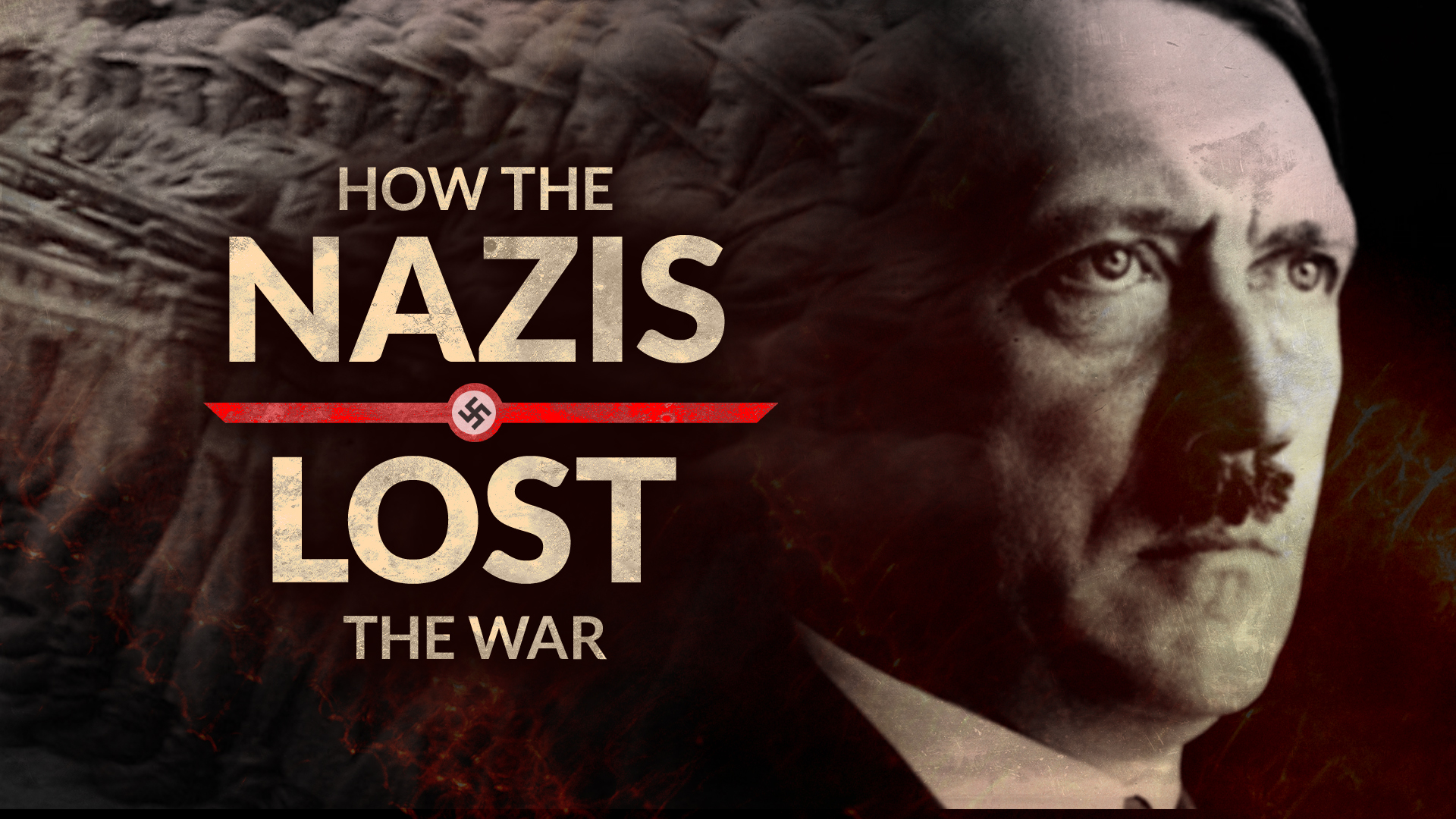Nazi Germany’s invasion of the Soviet Union in 1941 was one of the most ambitious military campaigns in history. It was also a strategic blunder, and the Battle of Moscow was the turning point of World War II on the Eastern Front.
◊
On June 22, 1941, not quite two years after the Molotov-Ribbentrop non-aggression pact was signed, Adolph Hitler committed one of the greatest blunders in military history by launching his previously invincible German forces on a misbegotten invasion of the Soviet Union. Codenamed Operation Barbarossa, the attack relied heavily on Germany’s blitzkrieg (lightning war) tactic and involved nearly four million ground troops supported by over 3,000 aircraft and 3,300 tanks. The front extended 1,800 miles from the Baltic Sea south to the Black Sea.
Hitler and his military planners expected to defeat the Soviets before the frigid winter set in. But, despite initial successes, their optimism crashed into the harsh realities of fighting the Russians on their own vast territory, in the most inclement weather imaginable. For the Germans, seemingly everything that could go wrong eventually did go wrong.
For a deeper dive into Germany's defeat in World War II, check out the MagellanTV series How the Nazis Lost the War.
Blitzkrieg Tactics Reveal Vulnerability
Early in the campaign, the invasion went according to plan. Employing the blitzkrieg model, troops, tanks, and aircraft worked together to advance quickly, capturing huge swaths of territory and key cities such as Minsk and Smolensk. The Red Army was knocked on its heels, suffering significant losses, with entire units being encircled and destroyed.
However, the German army's rapid advance created its own problems, revealing a key vulnerability in blitzkrieg tactics. The invaders moved with such speed that it became increasingly difficult to maintain supply lines and to communicate effectively. As these challenges became apparent, another loomed: winter was coming.
The Red Army Turns the Tide of Battle
By the time German troops approached Moscow, at the end of September 1941, Soviet resistance had stiffened. Bolstered by reinforcements from Siberia and the Far East, and supplied by factories beyond the reach of the Germans, the Red Army launched a series of counterattacks. The Soviet leader, Josef Stalin, refused to leave Moscow and appeared in Red Square for annual celebrations of the revolution that had given birth to the U.S.S.R.
The weather was already turning cold and wet. The first snow fell in early October, and, when it melted, German tanks and trucks got stuck in the mud. This problem was temporarily solved when conditions became more frigid, freezing the ground and allowing the armored vehicles to move again. But then another issue arose: Because the Germans confidently expected victory before winter set in, their troops were mostly clothed in lighter-weight uniforms unsuitable for cold weather fighting. By contrast, the Red Army was well-equipped for such conditions. Now, the blitzkrieg bogged down, only 15 miles from Moscow, the cupolas and minarets of the Kremlin within sight of the Germans.

Soviet troops counterattack in December 1941. (Source: McGill University/Wikimedia Commons)
The Battle of Moscow, which extended into January 1942, had significant strategic implications for both sides. For Germany, which was unable to accomplish its primary goal, capturing Moscow itself and toppling the Soviet government, it meant a prolonged war fought on multiple fronts. The Germans never again secured a major victory on the Eastern Front. For the Soviet Union, it was a critical boost to morale, the beginning of a sustained effort to push the Germans back, and a clear signal to its allies that an ultimate victory over the Nazi regime was achievable.
Ω
Title Image: Red Army soldiers on guard in Moscow (Source: Russia Beyond)


